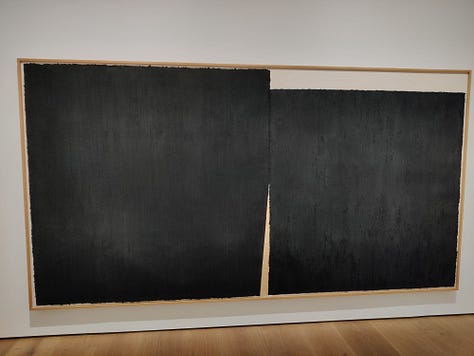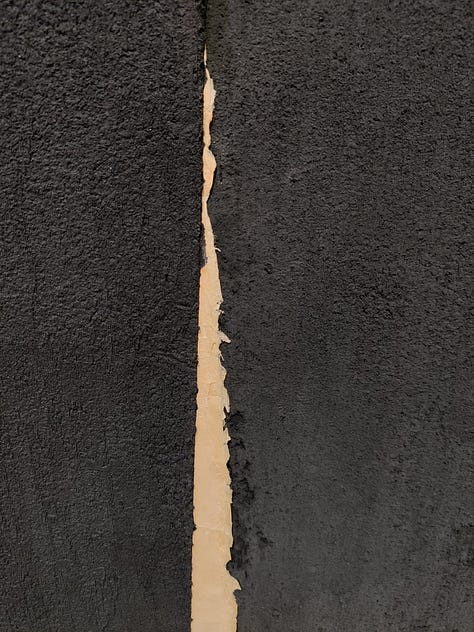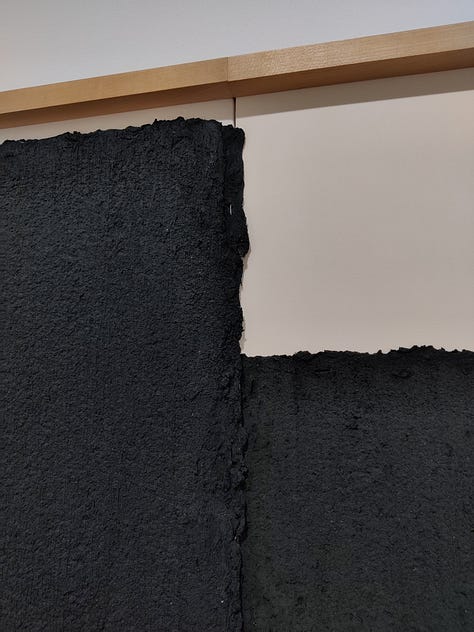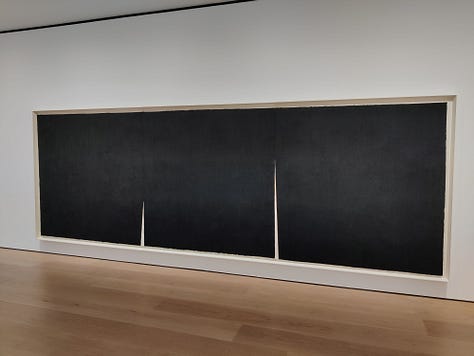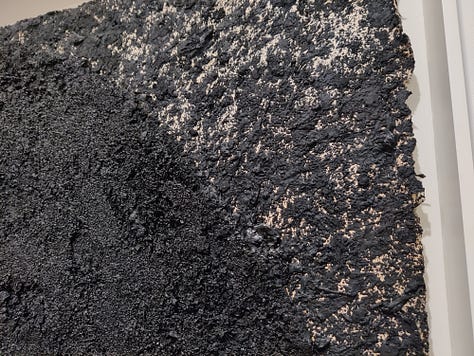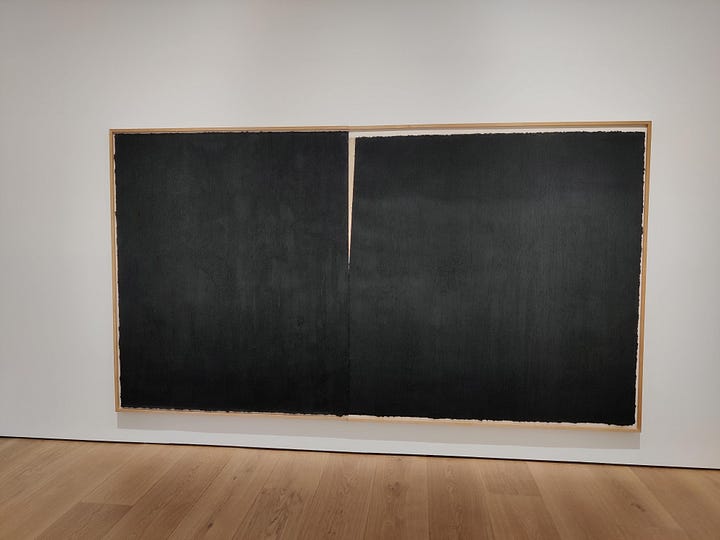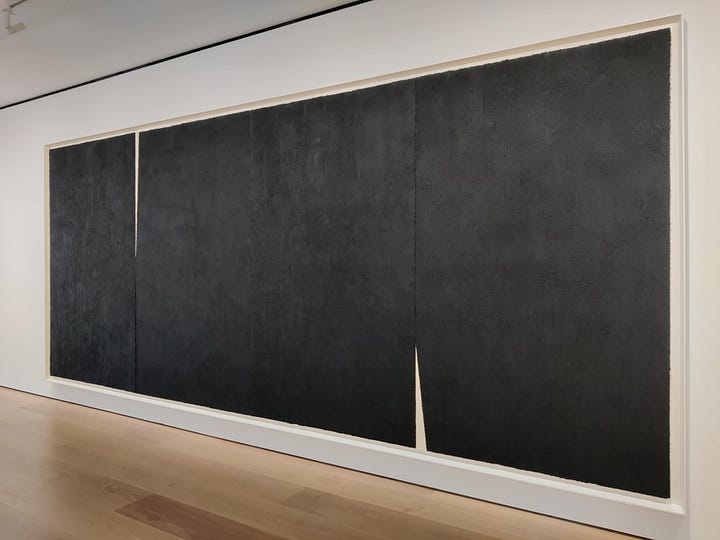Richard Serra - ‘Six Large Drawings’
9th April - 18th May, 2024
Richard Serra died on March 26th. I missed the opening for this the other night (only because of the football) so I don’t know what the energy was like – whether celebratory or sorrowful, or I imagine, some mix of it all. This would have been an important show anyway, but Serra’s death has given ‘Six Large Drawings’ an obvious added poignancy.
The title is not misleading. There are definitely six of them. There is no debate that they are very large. But ‘drawings’ is where it gets interesting. Yes, there’s paper involved, but the works’ sheer weight means they need to be bonded to canvas supports. And the thickness of the paintsticks he applied – by melting them down or crushing them with a meat grinder and daubing them onto the surface – makes the work eerily impastoed and sculptural (although Serra really didn’t like thinking about them as ‘sculpture’). ‘Cheever’ especially, is basically a mashed up mass of thick material, with the non-flatness of the ‘drawing’ both emphasised and somehow mitigated by the blackness of the pigment.
Serra wrote a pretty fabulous essay called ‘Notes on Drawing’, explaining his process. Beyond a few studies earlier on in his career, he really didn’t draw designs for his sculptures – he saw them as something completely different from pen and paper, so he made models. But there’s something as equally monkish and yet monumentally rock ‘n’ roll in these drawings as there is in his largest metal sculptures.
“Black is a property, not a quality” he explained in that essay, and the black Serra uses here is a vivid, livid black. It’s not a bluey-black, it’s not a browny-black, it’s not a weird science Vantablack. It’s just really, really black. It takes over rooms. It’s ugly, it’s beautiful, it’s silent, it’s noisy. It’s interrupted only by its own edges and the triangular rifts of bare paper that intersect some of the works.
In the aftermath of Serra’s death, I read something in the New Yorker about how, early in their respective careers, his close friend Philip Glass was working as a plumber, while Serra was doing removal jobs with his truck. Fittingly, Glass the plumber helped Serra prop up giant bits of lead to form his early sculptures.
I know there are many debates to be had about access to art-making as a profession (and yes, Serra had been to Yale, and Glass to the University of Chicago), and bros’ clubs, and the privileges of whiteness, but, I just like it as a story. It’s two friends mucking about with some metal and seeing where it went. And where it went really changed things for everyone.
Serra is only two weeks departed. But this show doesn’t feel like a funeral. Go and spend some time with it.
